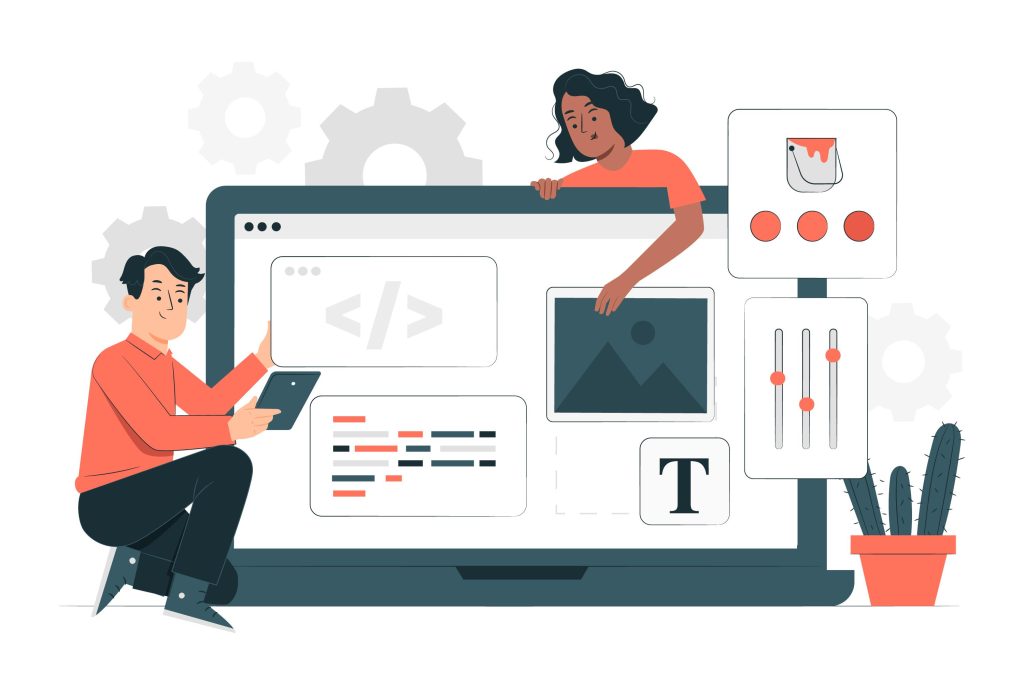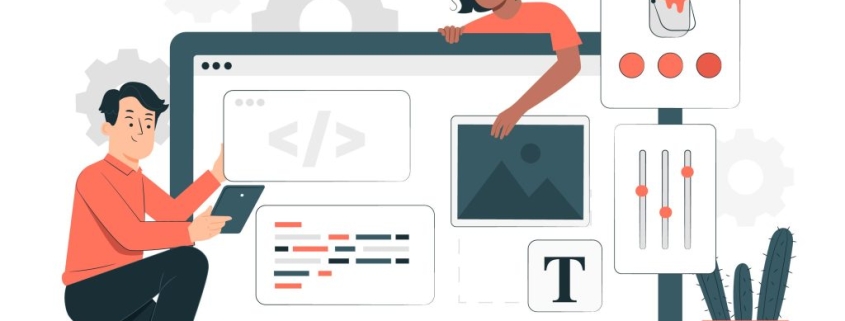Crafting Impact: The Art and Science of Website Design

In the digital age, a website is more than just a virtual address — it is a canvas where creativity meets strategy, and aesthetics intertwine with functionality.”Crafting Impact: The Art and Science of website Design” explores this dynamic intersection, revealing how thoughtful design shapes user experiences and drives meaningful engagement. Balancing artistry with analytical insight, website design transcends mere visuals to become a powerful tool for interaction, persuasion, and connection. This article delves into the principles, techniques, and evolving trends that define the craft, inviting readers to discover the delicate harmony behind every prosperous digital presence.
Understanding User Psychology to Enhance Engagement
To truly captivate visitors, it’s essential to tap into the subconscious drivers of human behaviour. When users interact with a site, their decisions are influenced by patterns shaped over millennia — comfort in familiarity, attraction to aesthetics, and the impulse for quick rewards. By weaving these psychological triggers into the design, creators create environments where users feel understood, confident, and motivated to explore further. Colors subtly sway emotions, typography cues hierarchy and importance, and consistent layouts minimize cognitive load, all merging into a seamless experience that feels intuitively right.
Beyond mere visual appeal, understanding psychological principles helps designers anticipate user needs and reduce friction in decision-making. Consider the following elements frequently enough used to enhance engagement:
- Anchoring: Placing critical details or incentives strategically to guide choices.
- Social Proof: Leveraging testimonials and user data to build trust immediately.
- Scarcity & Urgency: Encouraging action by signaling limited availability or time.
| Psychological Trigger | Design Application | User Impact |
|---|---|---|
| Familiarity | Consistent Navigation Patterns | Reduces Hesitation |
| Reciprocity | Offering Free Resources | Builds Goodwill |
| Visual Hierarchy | Use of Size & Contrast | Clarifies Priorities |
Balancing Aesthetics and Functionality for Seamless Navigation
Striking the perfect balance between visual allure and practical usability ensures visitors don’t just admire your site — they engage with it effortlessly. Every design element should invite exploration without confusion, transforming first-time visitors into loyal users. The key lies in crafting a clear hierarchy, intuitive pathways, and thoughtfully placed calls to action that harmonize with your aesthetic vision. When done right, the interface becomes invisible, allowing users to glide naturally through content while still appreciating the subtle artistry embedded in each detail.
Consider these essential components as pillars of seamless navigation:
- Clarity: Clean layouts with recognizable icons and well-labeled menus.
- Consistency: Uniform styles, fonts, and button placements that reduce cognitive load.
- Feedback: Visual cues and micro-interactions that guide user actions.
- Responsiveness: Swift adaptations for various devices and screen sizes.
The following table contrasts design choices that emphasize aesthetics against those prioritizing functionality, proving that the most compelling websites gracefully integrate both.
| Design Element | Aesthetic Focus | Functional Focus |
|---|---|---|
| Navigation Bar | Minimalistic, Visually Striking but Less Customary | Clear Labels, Familiar Placement, and Easy Access |
| Color Palette | Bold, Thematic Colors Enhancing Brand Personality | High Contrast for Readability and Accessibility |
| Interactive Elements | Subtle Animations Adding Depth | Immediate Feedback on Clicks and Hovers |
Leveraging Data-Driven Design to Optimize User Experience
In today’s digital landscape, intuition alone no longer suffices to craft compelling interfaces. Instead, analyzing user behavior through data empowers designers to tailor experiences that resonate deeply and function seamlessly. Metrics like heatmaps, session recordings, and conversion funnels reveal not just what users do, but why they do it. These insights allow designers to iterate rapidly, addressing pain points with surgical precision. By embracing a data-driven approach, every pixel placement and interaction choice becomes a calculated step toward greater engagement and satisfaction.
- Behavioral Analytics: Identify drop-off points and user friction.
- A/B Testing: Validate design changes with real-user feedback.
- Performance Metrics: Optimize loading times to reduce bounce rates.
| Data Source | Key Value | Design Insight |
|---|---|---|
| Heatmaps | Clicks Concentrated on Sidebar | Enhance Sidebar Navigation |
| Session Recordings | Frequent Form Abandonment | Simplify Form Fields |
| Conversion Rates | Mobile Users Lag Behind Desktop | Optimize Mobile Responsiveness |
Ultimately, merging hard data with creative intuition creates a feedback loop where design decisions are continuously refined. This synergy leads to websites that feel intuitive yet are underpinned by solid evidence, ensuring user needs are met with elegance and efficiency. When design becomes a dialogue between analytics and artistry, the user journey transforms from a guesswork gamble into a well-choreographed dance — each step informed, purposeful, and impactful.
Implementing Accessibility Standards for Inclusive Websites
Creating a truly welcoming digital environment requires more than just aesthetic finesse; it demands a thoughtful integration of accessibility practices that empower every visitor. By embedding elements like keyboard navigability, semantic HTML, and choice text for images, designers ensure that individuals with diverse abilities can engage seamlessly. Prioritizing clear color contrasts, adjustable font sizes, and intuitive layouts cultivates an experience where usability transcends barriers, transforming websites into inclusive platforms that resonate universally.
Adopting robust accessibility standards not only fulfills ethical and legal obligations but also enriches the user journey, enhancing overall satisfaction and reach. Below is a concise overview of pivotal accessibility features and their benefits:
| Feature | Purpose | Impact |
|---|---|---|
| ARIA Landmarks | Define Page Regions | Improved Screen Reader Navigation |
| Responsive Text | Scalable Font Sizes | Readability on All Devices |
| Captioned Media | Subtitles for Videos | Accessible to Hearing-impaired Users |
| Focus Indicators | Highlight Interactive Elements | Enhanced Keyboard Usability |
Final Thoughts…
In the ever-evolving landscape of the digital world, crafting a website that truly resonates is both an art and a science — a delicate balance of creativity, strategy, and empathy. As we navigate this dynamic terrain, the most impactful designs are those that not only captivate the eye but also engage the mind and heart. By embracing this holistic approach, designers and developers can transform mere pages into meaningful experiences, leaving a lasting impression in the vast expanse of the web. Ultimately, the craftsmanship behind website design is more than aesthetics or functionality; it’s the thoughtful orchestration of elements that brings a digital story to life.




![[Aggregator] Downloaded image for imported item #1363](https://ecomedgedigest.com/wp-content/uploads/2025/10/IMG_0937-1024x683-1-180x180.jpeg)

![[Aggregator] Downloaded image for imported item #1217](https://ecomedgedigest.com/wp-content/uploads/2025/08/IMG_0756-1024x683-1-180x180.jpeg)
![[Aggregator] Downloaded image for imported item #1324](https://ecomedgedigest.com/wp-content/uploads/2025/09/IMG_0824-1024x683-1-180x180.jpeg)


Leave a Reply
Want to join the discussion?Feel free to contribute!